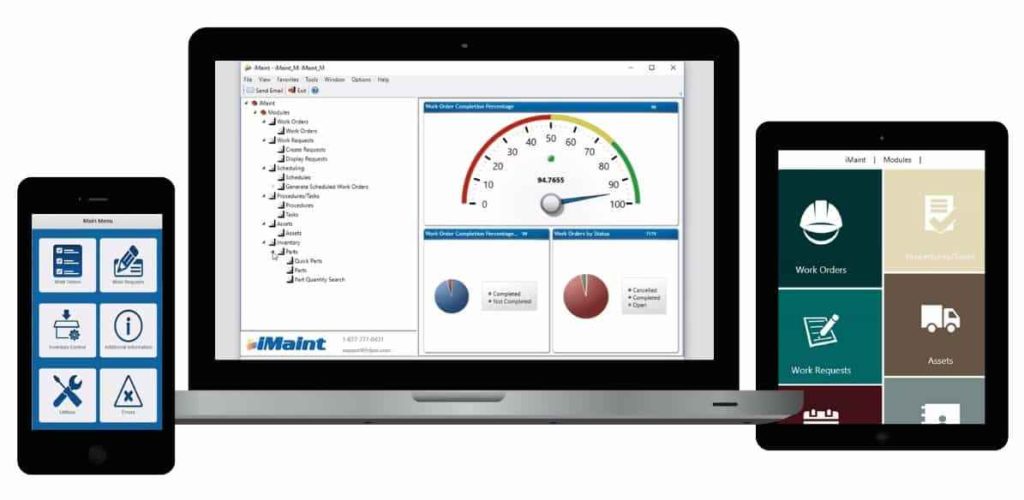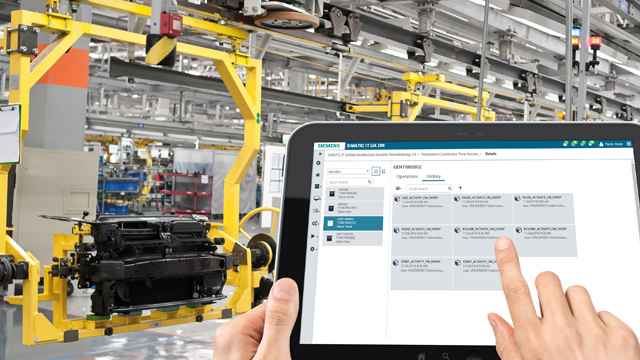Integrating with a CMMS, or Computerized Maintenance Management System can provide numerous benefits for businesses. One way to integrate with a CMMS is through the use of a CMMS API, or application programming interface. This allows different systems to communicate and exchange data with the CMMS. In this article, we will explore the benefits of integrating with a CMMS and the different types of integration that can streamline business processes.
Contents
- Benefits of Integrating with a CMMS
- Gain instant access to real-time data:
- Decrease staff workload:
- Automate maintenance tasks:
- Increase asset utilization:
- Minimize capital expenditure:
- Different types of integration with your CMMS can help you streamline your business processes
- Enterprise Resource Planning (ERP):
- Building Automation System (BAS):
- Sensors:
- Manufacturing Execution Systems (MES):
- Conclusion
Benefits of Integrating with a CMMS
Gain instant access to real-time data:
One of the major benefits of integrating with a CMMS is the ability to access real-time data. This means that maintenance teams can quickly and easily retrieve information about equipment status, inventory levels, and repair history. This can help improve decision-making and reduce downtime, increasing productivity and profitability. With real-time data, maintenance teams can identify problems as they arise and take immediate action to address them. This can help to prevent equipment failures and reduce the risk of costly downtime. Additionally, real-time data can help businesses make more informed decisions about their maintenance strategies and allocate resources more effectively.

Decrease staff workload:
Integrating with a CMMS can also help to decrease the workload of maintenance staff. By automating certain tasks, such as generating work orders and scheduling maintenance, staff can focus on more important tasks. This can help to improve efficiency and reduce the risk of human error. For example, the CMMS can automatically generate work orders based on maintenance schedules or equipment failures, saving staff the time and effort of manually creating these orders. The CMMS can also automatically schedule maintenance based on equipment usage or past performance, freeing up staff to focus on other tasks. By automating these tasks, businesses can not only reduce the workload of their maintenance staff but also improve the accuracy and timeliness of their maintenance processes.
Automate maintenance tasks:
In addition to decreasing staff workload, integrating with a CMMS can also help to automate maintenance tasks. By setting up automated workflows within the CMMS, businesses can streamline their maintenance processes and improve efficiency. For example, the CMMS can send automatic notifications when equipment is due for maintenance or when inventory levels are low. This can help to ensure that equipment is properly maintained and that necessary supplies are always available. Automating these tasks can help businesses to reduce the risk of equipment failure and improve the overall reliability of their operations. Additionally, automating maintenance tasks can help to free up staff time and allow them to focus on more important tasks.
Increase asset utilization:
Integrating with a CMMS can also help businesses to increase the utilization of their assets. By tracking the usage and performance of equipment, businesses can better understand which assets are being used most frequently and which may be underutilized. This can help to optimize the allocation of resources and improve profitability.
For example, if a business has several pieces of equipment that are only being used a few hours per week, it may be more cost-effective to replace these assets with a single, more efficient piece of equipment. By tracking asset utilization, businesses can identify opportunities to improve efficiency and reduce costs. Additionally, by analyzing performance data, businesses can identify opportunities to extend the lifespan of their assets through proper maintenance and repair.
Minimize capital expenditure:
Another benefit of integrating with a CMMS is the ability to minimize capital expenditure. By tracking the condition and maintenance history of the equipment, businesses can identify opportunities to repair or upgrade rather than replace. This can help to reduce the overall cost of maintaining equipment and improve the bottom line.
Different types of integration with your CMMS can help you streamline your business processes
Enterprise Resource Planning (ERP):
Enterprise Resource Planning (ERP) is a comprehensive software solution that integrates all the various departments and functions within a business, including finance, human resources, and supply chain management. By integrating the CMMS with the ERP, businesses can access a single source of information that includes both maintenance and financial data. This can help to improve decision-making and streamline business processes.
For example, if a maintenance team is considering purchasing a new piece of equipment, they can use the ERP to see how this purchase would impact the overall budget of the business. Additionally, by integrating the CMMS with the ERP, businesses can track the cost of maintenance and repair over time, helping them to identify opportunities to reduce costs and improve efficiency.
Building Automation System (BAS):
A Building Automation System (BAS) is a computer-based control system that monitors and controls the mechanical and electrical systems in a building. By integrating the CMMS with the BAS, businesses can better track and manage the maintenance of these systems, leading to increased efficiency and cost savings.
For example, the BAS can monitor the performance of HVAC systems and alert maintenance staff when a problem arises. This can help to prevent equipment failures and reduce the risk of costly downtime. Additionally, by integrating the CMMS with the BAS, maintenance staff can access real-time data about the performance of the building’s systems and take proactive measures to prevent problems. This can help to improve the overall reliability of the building and reduce costs.
Sensors:
Another way to integrate with a CMMS is through the use of sensors. Sensors can be used to monitor the performance and condition of equipment, and the data collected can be fed directly into the CMMS. This can help to predict maintenance needs and prevent equipment failures, leading to reduced downtime and increased productivity.
For example, sensors can be installed on equipment to monitor temperature, vibration, or other factors that may indicate a potential problem. When a sensor detects an issue, it can trigger an alert within the CMMS, allowing maintenance staff to take action before a failure occurs. By using sensors to monitor equipment, businesses can reduce the risk of equipment failure and improve the reliability of their operations. Additionally, by analyzing the data collected by sensors, businesses can identify patterns and trends that can help to optimize maintenance schedules and improve efficiency.
Manufacturing Execution Systems (MES):

A Manufacturing Execution System (MES) is a software system that helps to manage and optimize the production process. By integrating the CMMS with the MES, businesses can track and manage the maintenance of equipment used in the production process. This can help to reduce downtime and improve efficiency, leading to increased productivity and profitability.
For example, if a piece of equipment used in the production process fails, the MES can automatically trigger a work order within the CMMS to repair the equipment. This can help to reduce the risk of downtime and ensure that production remains on track. Additionally, by integrating the CMMS with the MES, businesses can access real-time data about the performance of their production equipment and make more informed decisions about maintenance and repair.
Conclusion
Integrating with a CMMS can provide numerous benefits for businesses, including instant access to real-time data, decreased staff workload, automated maintenance tasks, increased asset utilization, and minimized capital expenditure. Various types of integration can help businesses streamline their processes, including integration with an ERP system, a BAS, sensors, and an MES. Integrating with a CMMS can help businesses improve efficiency, reduce costs, and increase profitability.


